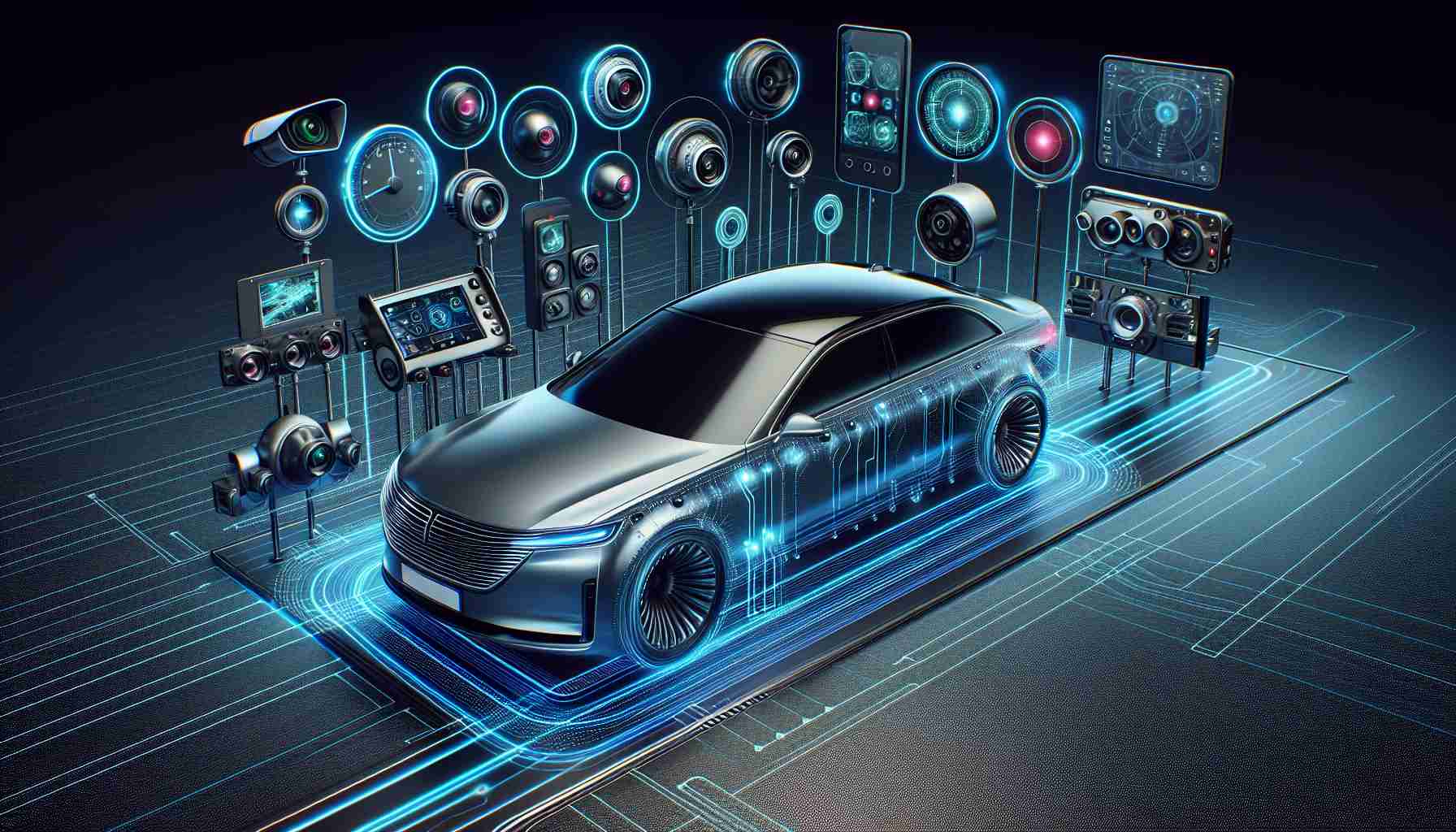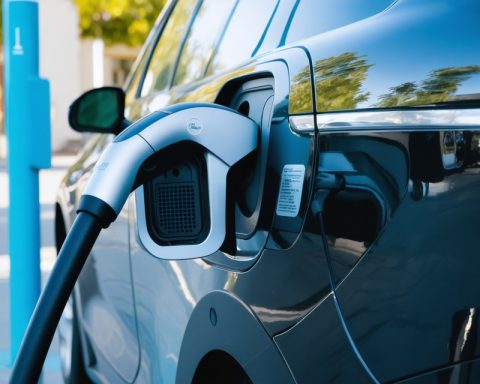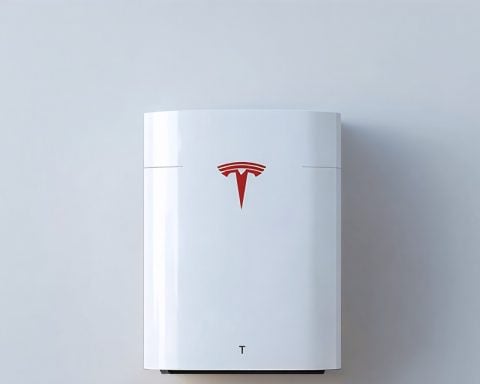Revolutionizing the Future of Driving
In an exciting announcement, Rivian, the electric vehicle manufacturer, has revealed plans to introduce its hands-free driver assistance systems in 2025, followed by its more advanced “eyes-off” systems in 2026. The company’s CEO, RJ Scaringe, expressed optimism regarding the company’s prospects, especially concerning the potential risks tied to a loan for a Georgia plant amid recent political changes.
With an intense race among automakers to enhance autonomous driving capabilities, Rivian has made strides with its Gen 2 vehicles, featuring the “Rivian Autonomy Platform.” Currently, this platform assists drivers while requiring their active engagement—similar to technologies offered by competitors.
Additionally, the regulatory landscape is shifting. The U.S. National Highway Traffic Safety Administration has launched an investigation regarding 2.6 million Tesla vehicles over concerns related to remote operation features. This scrutiny comes as Rivian finalizes a significant loan with the U.S. Department of Energy worth up to $6.6 billion to support its Georgia production facility.
The electric vehicle sector is witnessing a transformation, particularly with Rivian’s efforts to innovate and compete against industry giants like Tesla, who are pivoting towards self-driving technology. The upcoming years promise to be pivotal in the evolution of driving assistance as Rivian positions itself at the forefront of this technological revolution.
Driving into the Future: Implications Beyond the Vehicle
The advancement of autonomous driving technology, particularly through Rivian’s initiatives, signals a seismic shift, not just for automakers but for society and the global economy at large. As driver assistance systems become more sophisticated, the potential changes in transportation modalities could revolutionize urban planning and traffic management. Cities may increasingly prioritize pedestrian-friendly spaces, which could lead to a renaissance in public transport and shared mobility options.
Culturally, the prospect of hands-free and eyes-off driving opens the door to redefined social interactions within vehicles, shifting the focus from driving to passenger experiences. This evolution could foster a new market for in-car entertainment and productivity tools, creating a direct impact on consumer behavior and lifestyle choices.
Moreover, the environmental implications of widespread adoption of electric vehicles and autonomous driving tech are significant. The reduction of fossil fuel reliance could greatly alleviate urban air pollution, supporting global sustainability goals. As Rivian and competitors continue to innovate, the collective push for cleaner technologies may become a catalyst for further investment in renewable energy resources.
Looking ahead, the convergence of these trends could herald an era where autonomous vehicles are not merely driven but integrated into a cohesive, tech-driven ecosystem. This evolution will reshape the way we think about transportation, mobility, and environmental responsibility, underscoring the intersection of technology and modern life.
Rivian Set to Lead the Charge in Autonomous Driving Technology
The Future of Autonomous Driving
With the automotive industry rapidly evolving, Rivian, the innovative electric vehicle (EV) manufacturer, is making significant strides in the realm of autonomous driving technology. In a bold move, Rivian has announced its plans to introduce hands-free driver assistance systems by 2025, followed by its more advanced “eyes-off” systems in 2026. This progression marks a critical evolution in how drivers interact with vehicles and offers insights into the future of mobility.
Key Features of Rivian’s Autonomy Platform
Rivian’s forthcoming innovations will be built upon their Gen 2 vehicles, showcasing the “Rivian Autonomy Platform.” While the current version provides crucial assistance to drivers, the system emphasizes the need for active engagement, making it similar to offerings from competitors such as Tesla and Ford. Here are some key features of Rivian’s plans:
– Hands-Free Driving: Scheduled for launch in 2025, this feature seeks to minimize driver fatigue on long journeys, allowing for a more relaxed driving experience.
– Eyes-Off Technology: Slated for 2026, this advancement will enable vehicles to operate autonomously without the driver’s active monitoring.
– Enhanced Safety Protocols: Continuous updates aim to address safety concerns, ensuring that the technology adheres to regulatory standards and provides a secure driving experience.
Pros and Cons of Rivian’s Autonomous Features
Pros:
– Reduced Driver Fatigue: Hands-free systems can alleviate stress during long trips.
– Increased Accessibility: Autonomy technology could provide mobility solutions for individuals unable to drive.
– Environmental Impact: Electric vehicles contribute to lower carbon footprints compared to traditional vehicles.
Cons:
– Technological Reliability: There are inherent risks in relying on autonomous systems that may require further testing.
– Regulatory Scrutiny: As the industry innovates, compliance with safety regulations remains a significant concern.
Market Trends and Innovations
The electric vehicle market is witnessing an unprecedented transformation, with increased investment in autonomous driving technology. Rivian’s strategic moves come amid a bustling market filled with competitive pressures from established players like Tesla, who have already implemented extensive autonomous features in their vehicles. According to recent market analysis, the demand for fully electric and autonomous vehicles is expected to grow exponentially, leading to substantial shifts in consumer behavior and manufacturer strategies.
Use Cases and Limitations
As Rivian gears up for its technological advancements, various use cases present promising scenarios:
– Long-Distance Travel: Hands-free driving systems could make road trips far more enjoyable.
– Urban Mobility: Autonomous features could simplify city driving, reducing congestion.
However, there are limitations to consider:
– Dependence on Infrastructure: Successful implementation hinges on the availability of supporting smart infrastructure.
– Public Perception: Acceptance of autonomous vehicles varies significantly among consumers, impacting adoption rates.
Pricing Insights and Future Predictions
Rivian’s upcoming technology, especially regarding autonomy, may influence vehicle pricing structures as features become standard in future models. As the market evolves, analysts predict the following trends:
– Price Adjustments: Expect slight increases in EV prices integrated with advanced technologies.
– Increased Adoption Rates: Continued innovations are likely to encourage greater consumer trust and adoption of electric vehicles.
Final Thoughts
As Rivian positions itself at the forefront of the autonomous driving revolution, the next few years will be pivotal for the company and the entire EV sector. With a commitment to innovation, sustainability, and safety, Rivian aims to not only compete but lead in the electrification and automation of driving.
For more insights and information about Rivian and its groundbreaking technologies, visit Rivian.













